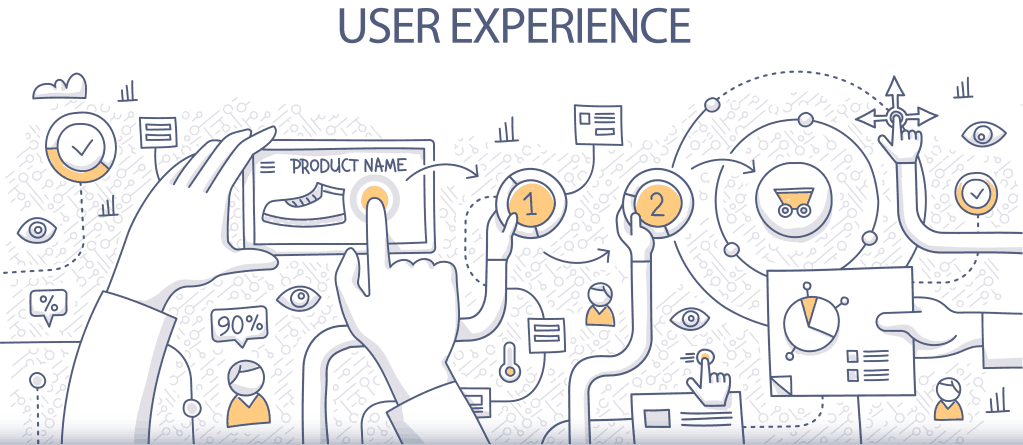Why is User Experience Important?
Don Norman, an American cognitive scientist who first coined the term “User Experience” imagined a product as a cohesive, integrated set of experiences for the customer. These experiences began at the first interaction with the company and extended throughout the entire product life cycle.
User experience design is the most important aspect of building and marketing a website that meets the needs of your customers and drives them toward target behaviors. Website UX design enhances user satisfaction by making websites easier to use, efficient to navigate and accessible for users on a variety of devices. UX designers implement changes and updates that enhance the user experience, helping more of your customers find what they’re looking for and resulting in more leads, conversions, and opportunities for your sales team.

Components of a Meaningful and Valuable User Experience
Delivering an exceptional user experience requires a deep understanding of what your users want, what their values are, what they’re looking for and what tools they need to accomplish their goals. The objective of UX design is to use this information to drive customer satisfaction in every interaction while funneling prospects towards a desired activity or outcome. Consider the following components of meaningful and valuable user experience design for a website:
- Accessibility – Content should be accessible for persons with disabilities. Developers should ensure that the website presents well on a variety of devices, including mobiles, laptops and even on television screens. Responsive design is a must as mobile shopping and browsing continue to grow.
- Credibility – Content should be credible and your company should strive to earn the trust and confidence of prospects in each interaction.
- Desirability – Website design elements should reflect a brand image and identity that customers would like to be associated with.
- Findability – Content should be easy to find and navigate. The customer should be able to get the answers they need or navigate to the page they’re looking for with minimal effort. Intuitive navigation and organization are important features.
- Usability – The website should be easy to use.
- Usefulness – Content, products, and services should be useful to the customer, addressing the customer’s needs and meeting them as comprehensively as possible.
An effective user experience designer incorporates elements of visual design, content strategy and design, user interface and website design and more. User research may be conducted to help the designer further understand the unique contextual needs of the customer and how to design an experience that best meets those requirements.





